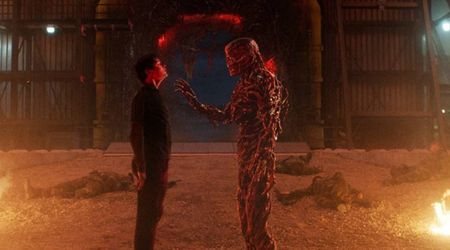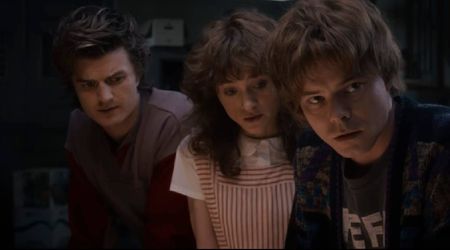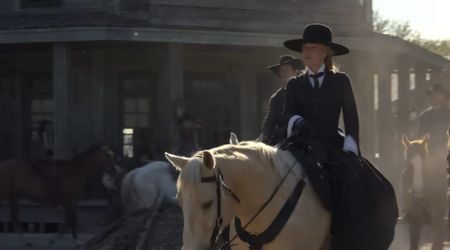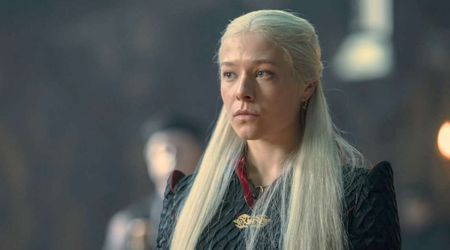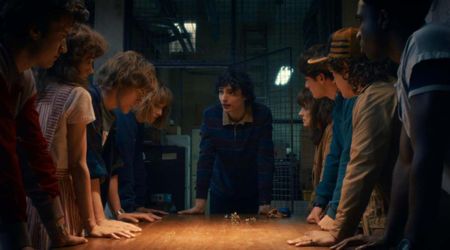'America: Our Defining Hours': Murder of 5 Bostonians by the Red Coats laid the foundation for US independence

In the late 18th century, some 150 years after the first settlers arrived in the "New World", tensions ran high, as over 2,000 British soldiers occupied the city of Boston, Massachusetts. The British Empire was successful in conquering North America but there were lots of expenses to bear. As a result, new tax reforms and regulations were introduced that left Bostonians dry of any money. This rankled colonists and Boston became the hotbed of resistance to the British-enforced tax laws to the point that it culminated with a bloody confrontation.
'America: Our Defining Hours', is a three-part docuseries that unravel American history in all its glory. Its dramatized sequences coupled with documentary elements and expert interviews shed light on the adversity of America, from the country's birth to the present day. The first episode of the series also draws focus to the Boston Massacre, the angry Bostonians' response to the regressive tax reforms of the Red Coats which essentially laid the foundation for the fight for independence.
The Boston Massacre was a lethal riot that took place on King Street on March 5, 1770. The British were increasingly unwelcome in Boston, and as their oppression continued, the colonists had reached their limit. The mob who called themselves "Patriots" had initially gathered at the Customs House in Boston and started taunting the British soldiers that were standing guard. They were protesting against British occupation in the city. The British had been sent to Boston to enforce the unpopular tax regulation passed by their parliament that lacked American representation. Captain Thomas Preston, a British commanding officer at the Customs House, demanded his mean to fix their bayonets and assist the guards outside in fending off the mob. The Patriots' response was to throw snowballs, stones, and other objects at the British guards, which hit Private Hugh Montgomery whose rifle went off at the crowd.

What started as a mere street altercation with snowballs and stones between American colonists and a single British sentinel, quickly escalated into a chaotic and bloody fight. The additional soldiers also opened fire at the mob, causing five casualties — Crispus Attucks, Patrick Carr, Samuel Gray, Samuel Maverick and James Caldwell — and injuring six. The tragic event, however, helped fuel the ire of the citizens and provoked the anti-British sentiment that ultimately paved the way for the American Revolution. The deaths of the five men are commonly cited by historians as being the first fatalities of the war of independence.
The British soldiers that were involved in the massacre were thereafter put on trials, and Patriots John Adams and Josiah Quincy volunteered to defend the soldiers as a display of support for the colonial justice system. The trial ended in December 1770, with the conviction that two British soldiers were found guilty of manslaughter. Their thumbs were branded with and "M" for murder as a mark of punishment.
The 'Sons of Liberty', a Patriot group that was formed ion 1765 to oppose the Stamp Act, incorporated the 'Boston Massacre' as an advertisement for the battle for American liberty. Paul Revere, a fellow Patriot as well as a silversmith and engraver, made a provocative and celebrated engaging of the massacre, depicting the British as ruthless and enjoying the slaughter of civilians. Copies of the engraving were printed and distributed throughout the 13 colonies to reinvigorate anti-British sentiments.

The American Revolution began in 1775 when British troops from Boston clashed with an American militia at the battles of Lexington and Concord. The Red Coats had been under orders to take into their custody Patriot leaders Samuel Adams and John Hancock in Lexington and to also confiscate the Patriot armaments at Concord.
Neither order was fulfilled as Paul Revere and William Dawes who had ridden ahead of the British had managed to warn Adams and Hancock while rousing the Patriots. The British forces were forced to evacuate Boston following American General George Washington's successful installation of fortifications and cannons on Dorchester Heights in March 1776. Eight years of British occupation in the city of Boston was effectively brought to an end.

